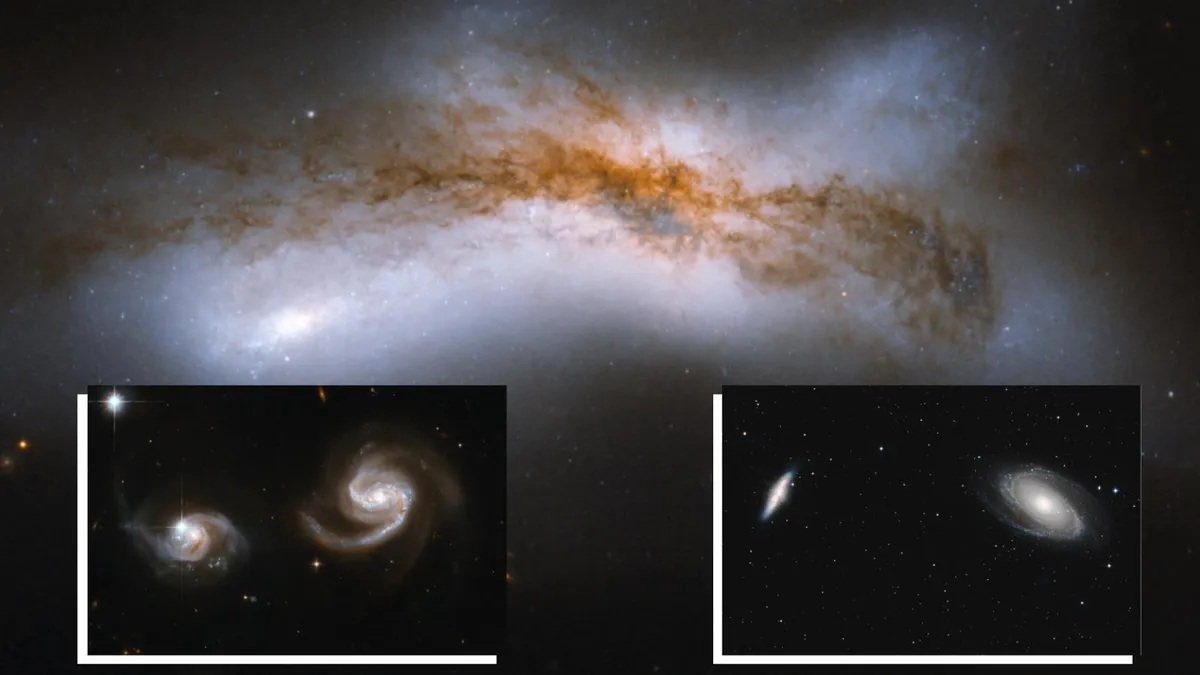
A titanic cosmic collision between the Milky Way and its closest large galactic neighbor, Andromeda, may not be as inevitable as scientists once believed. Prior predictions suggested that these two spiral galaxies would likely merge in approximately 5 billion years, forming a new daughter galaxy dubbed Milkomeda. However, recent research has significantly altered this outlook, revealing that the chances of a merger occurring within the next 10 billion years are considerably lower than previously thought.
According to the latest study led by researcher Til Sawala from the University of Helsinki, the probability of the Milky Way and Andromeda merging has dropped to approximately 50%. “Our main finding is that the merger, which was predicted to occur in around 4.5 billion years, is actually much less certain,” Sawala explained to Space.com. This shift in probability from near-certainty to a mere coin flip has surprised many in the astronomical community.
Sawala and his team reached this conclusion by simulating the Milky Way's journey through the universe over the next 10 billion years. This simulation utilized updated astronomical data from the Hubble Space Telescope and the European Space Agency's Gaia star tracking mission. The research also incorporated new estimates of the masses of smaller dwarf galaxies surrounding the Milky Way, which influence its gravitational interactions.
“The main difference between our research and previous studies is that we benefited from newer and more precise data. We considered a more complete system, including the effects of the Large Magellanic Cloud, the Milky Way's largest satellite galaxy,” Sawala noted.
The research team presented various scenarios regarding the potential outcomes of the Milky Way and Andromeda galaxies as they gradually move closer together. They concluded that a head-on collision is highly unlikely, with a less than 2% chance of such an event occurring. Instead, in most scenarios leading to a merger, the galaxies will initially pass each other, leading to a loss of orbital energy that could eventually result in a merger.
However, the uncertainty regarding how close the galaxies will come during their first encounter remains significant. If the distance exceeds around 500,000 light-years, the likelihood of a merger diminishes greatly.
Research indicated that if the orbits of the Milky Way and Andromeda bring them close enough to gravitationally influence each other, a merger becomes a possibility. Yet, it is equally probable that they will remain well separated, allowing them to evolve mostly in isolation. Interestingly, the study found that while the odds of a merger with Andromeda decrease when accounting for the Large Magellanic Cloud's influence, it increases the likelihood of the Milky Way cannibalizing this dwarf galaxy. In fact, the Milky Way is almost certain to merge with the Large Magellanic Cloud within the next 2 billion years.
As the research progresses, the scientific community remains eager to determine whether the Milky Way and Andromeda will indeed collide. “This will require more observational data and comprehensive modeling of their interactions, as well as the environment in which they evolve,” Sawala stated. Fortunately, additional observational data from the Gaia Space Telescope and potentially the Hubble Space Telescope is expected next year, which could shed light on this cosmic mystery.